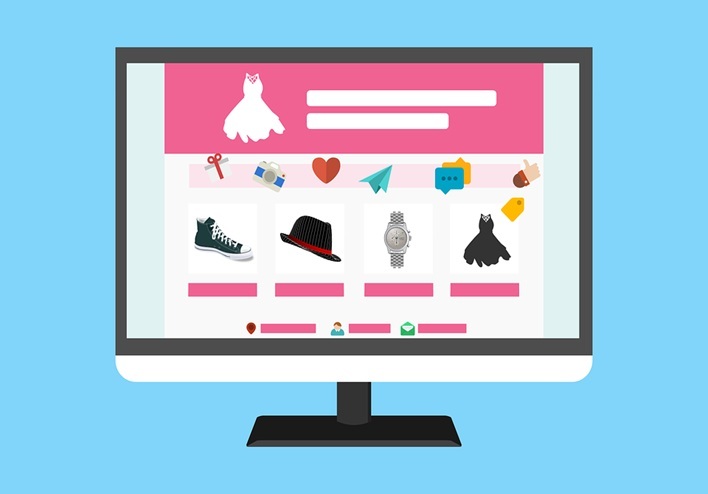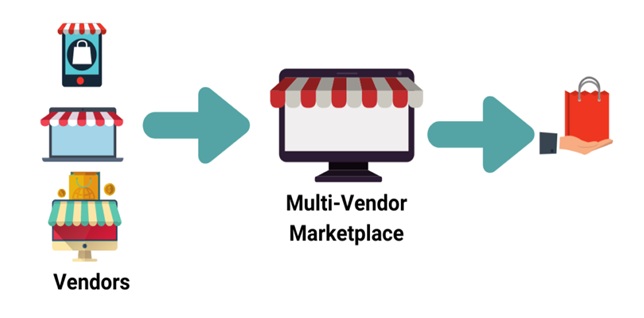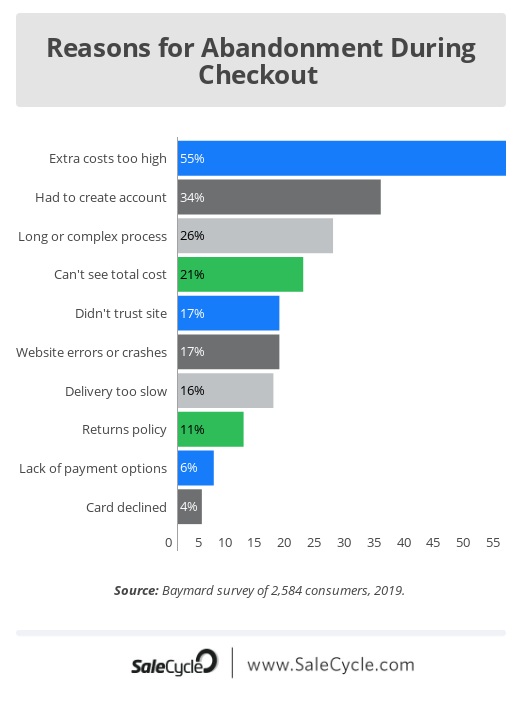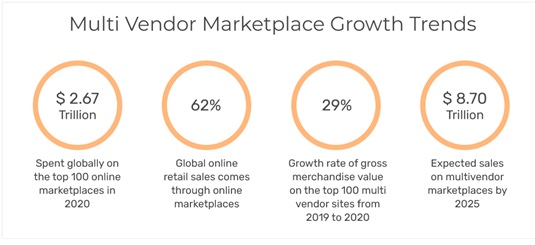We live in an age of convenience, and few things are more convenient for the consumer than the multi-vendor marketplace. Right now, multi-vendor marketplaces are emerging everywhere, with new ideas and new platforms popping up all the time.


We live in an age of convenience, and few things are more convenient for the consumer than the multi-vendor marketplace. Right now, multi-vendor marketplaces are emerging everywhere, with new ideas and new platforms popping up all the time.
Slick, fast, reliable, and you only have to input your data once - from the consumer’s point of view, multi-vendor marketplaces are perfect.
From the vendor's point of view, it’s a bit different. You want your products to be displayed to their best advantage. You want your branding and your brand presence to be consistent. You want a certain amount of integrity. You want to build loyalty. Hopping onto a multi-vendor marketing platform can feel like sacrificing all of this.
But it doesn’t have to. It’s great to have your own, well-designed, perfectly curated ecommerce site, but you’re doing yourself a disservice if you’re relying solely on your own site to bring in conversions.
The hard truth is this: unless they’re deeply engaged with your brand, customers often can’t be bothered to create an account on your own personal platform. They are sick of filling out forms, they are deeply concerned about ecommerce security, and they don’t want to sign in every time they want to re-order your product.
If you don’t have a presence on a multi-vendor marketing platform or Inventory Management Software, you will lose sales. What’s more, you won’t benefit from the advantages that the multi-vendor marketplace has to offer.
Remember, jumping onto a marketplace doesn’t mean you have to sacrifice your own ecommerce platform or Inventory Management Software - it just gives you an extra string to your bow.
Still not sure? Let’s break multi-vendor marketplaces down for you:
Think of a multi-vendor marketplace as like an online department store. It’s a platform through which different vendors can distribute their products/services, all in one place.

Different vendors distinguish themselves through things like digital signage and clever SEO. Revenue is distributed to the relevant vendor following purchase. But from the point of view of the customer, everything is done via one platform.
Amazon, eBay, and Etsy are classic examples of multi-vendor marketplaces. Individual vendors can list their products/services on the platform and will get the revenue paid directly to them (after costs), but all the ecommerce processes are handled by the marketplace platform itself. For example, Amazon does not take you to the individual vendor’s site to process your transaction - it handles the checkout process itself.

Consumers and vendors alike love multi-vendor marketplaces for a variety of reasons:

Of course, it’s not all rainbows and sunshine. There are disadvantages to everything, including multi-vendor marketplaces. You should consider these carefully before setting out your stall.
Everything in business involves compromise, but joining a multi-vendor marketplace may involve more compromise than you’re comfortable with. Consider the following before taking the plunge:
Amazon, for example, strongly encourages retailers to go wholesale. However, it’s not always viable for smaller businesses to opt for a wholesale model, as it involves a lot of upfront cost for uncertain rewards.
You can offset a lot of the disadvantages of a multi-vendor marketplace by being clever about the marketplace you choose. Here are some things to consider before taking the plunge:
For example, if you are targeting a socially-conscious audience who avoid giving trade to Bezos, Amazon is probably not the platform for you - but Etsy might suit. On the other hand, if your customers like speed and convenience above all else, Amazon or eBay are probably the way forward.
For example, some multi-vendor marketplaces offer things like a regular free online conference, and dedicated helplines for their vendors, while others leave their vendors to work things out their own way. If you prefer to be more independent, choose a marketplace that’s less hands-on. If you need the support, look for a marketplace that provides it.

For trust, security, and ease of purchase, you can’t beat a multi-vendor marketplace. While you might need to make some compromises when posting your products, we think that the advantages far outweigh these issues - especially if you choose your marketplace carefully.
In the years to come, it’s likely that multi-vendor marketplaces will only rise in popularity, so we recommend taking the jump now in order to stay ahead of the curve.
Of course, if you can’t find the perfect multi-vendor marketplace for you - you can always build your own! Who knows? Your platform could be just what vendors and customers are looking for.
She is the Senior Manager for Content Marketing at Dialpad, an AI-incorporated cloud-hosted unified communications system and cloud PBX system that provides valuable call details for business owners and sales representatives. She is driven and passionate about communicating a brand’s design sensibility and visualizing how content can be presented in creative and comprehensive ways. She has written for CrocoBlock and Agile Business Consortium.






